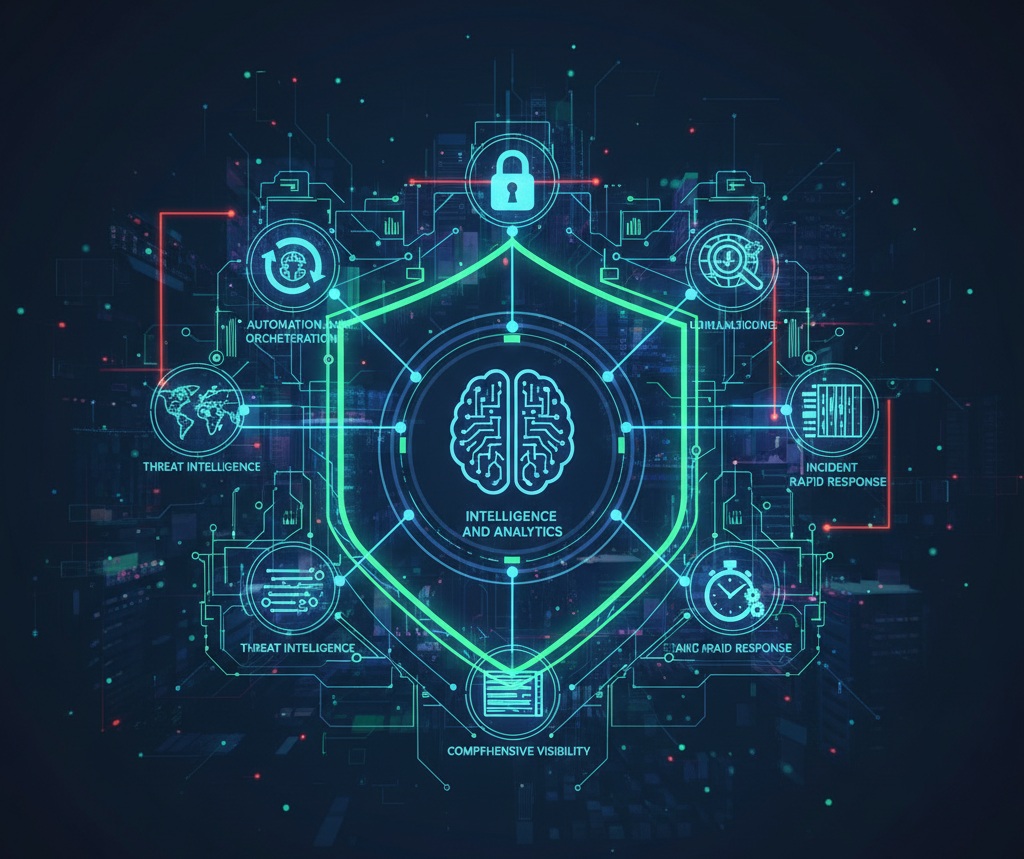SecOps redefines cybersecurity by merging IT operations and security into a unified, proactive defense strategy. Through real-time monitoring, automation, and collaboration, it helps organizations detect, prevent, and respond to threats faster—building true cyber resilience.
-
Understanding SecOps: The Backbone of Modern Cyber Defense
SecOps, short for Security Operations, represents the fusion of security and IT operations into a unified process. Instead of treating cybersecurity as a separate department, SecOps integrates protection directly into every stage of infrastructure and application management.
In today’s threat landscape—where attacks can evolve within hours and exploit cloud, on-prem, or hybrid systems—reactive defenses are no longer enough. SecOps enables organizations to move from “responding to incidents” to preventing them before they occur, through constant monitoring, real-time collaboration, and automation.
-
The evolution: from legacy SOC to modern SecOps
Traditional Security Operations Centers (SOCs) often operated in isolation, responding to alerts after a breach occurred. Modern SecOps changes that approach.
It leverages real-time telemetry, threat intelligence, and automation to continuously detect, analyze, and respond to threats. This proactive model enhances visibility, reduces dwell time, and ensures faster containment before damage spreads.
-
Monitor and Log Activity
A successful SecOps framework rests on five core elements:
-
Comprehensive visibility: Aggregate logs and telemetry from cloud, network, endpoint, and identity systems.
-
Threat intelligence integration: Combine external feeds with internal data to identify relevant risks faster.
-
Automation & orchestration: Use SOAR (Security Orchestration, Automation & Response) tools to streamline repetitive tasks.
-
Incident readiness: Predefined playbooks, simulation exercises, and escalation procedures for rapid containment.
-
Continuous analytics: Use behavioral detection, anomaly monitoring, and correlation engines for real-time situational awareness.
-
-
Practical steps for implementation
Building SecOps is a gradual process. Here’s how to start:
- Map your digital ecosystem: Identify assets across cloud, on-prem, and edge environments.
- Centralize monitoring: Route all security logs into a unified SIEM for correlation.
- Automate common responses: Isolate compromised endpoints, block suspicious IPs, or enforce MFA automatically.
- Run regular simulations: Conduct red team/blue team exercises and incident response drills.
-
Measure and improve: Track metrics like MTTD (Mean Time to Detect) and MTTR (Mean Time to Respond) to benchmark progress.
-
Benefits of adopting SecOps
Implementing SecOps delivers measurable gains across security and IT operations:
-
Faster detection and response times
-
Improved collaboration between security, IT, and DevOps teams
-
Reduced attack surface and downtime
-
Better compliance and audit readiness
-
Increased resilience and business continuity
-
-
Common challenges and how to overcome them
Tool sprawl: Multiple disconnected tools create data silos.
-Fix: Integrate tools through APIs or use a unified SecOps platform.
Alert fatigue: Analysts often drown in false positives.
-Fix: Tune detection rules and use automation to triage routine alerts.
Cultural divide: IT and security teams often have different goals.
-Fix: Foster collaboration, shared KPIs, and cross-training programs.
Skill shortages: Qualified SecOps professionals are in high demand.
-Fix: Upskill existing teams and adopt managed SecOps services where needed. -
The future of SecOps
As threats become more adaptive, SecOps continues to evolve.
-
AI-powered detection will identify threats faster than manual analysis.
-
Cloud-native SecOps will handle elastic workloads and microservices at scale.
-
Identity-driven security will replace perimeter-based defenses.
-
Managed SecOps services will help organizations lacking 24×7 coverage or in-house expertise.
-
Proactive patching isn’t optional — it’s your first line of defense against full system compromise.
Key Takeaway
SecOps isn’t just a framework-it’s a strategic security culture that transforms how organizations protect themselves. By embedding security into every operational layer, teams can anticipate, detect, and neutralize threats before they impact business continuity.
In an age where cyber threats evolve daily, resilience is the new perimeter-and SecOps is the foundation that keeps it strong.

